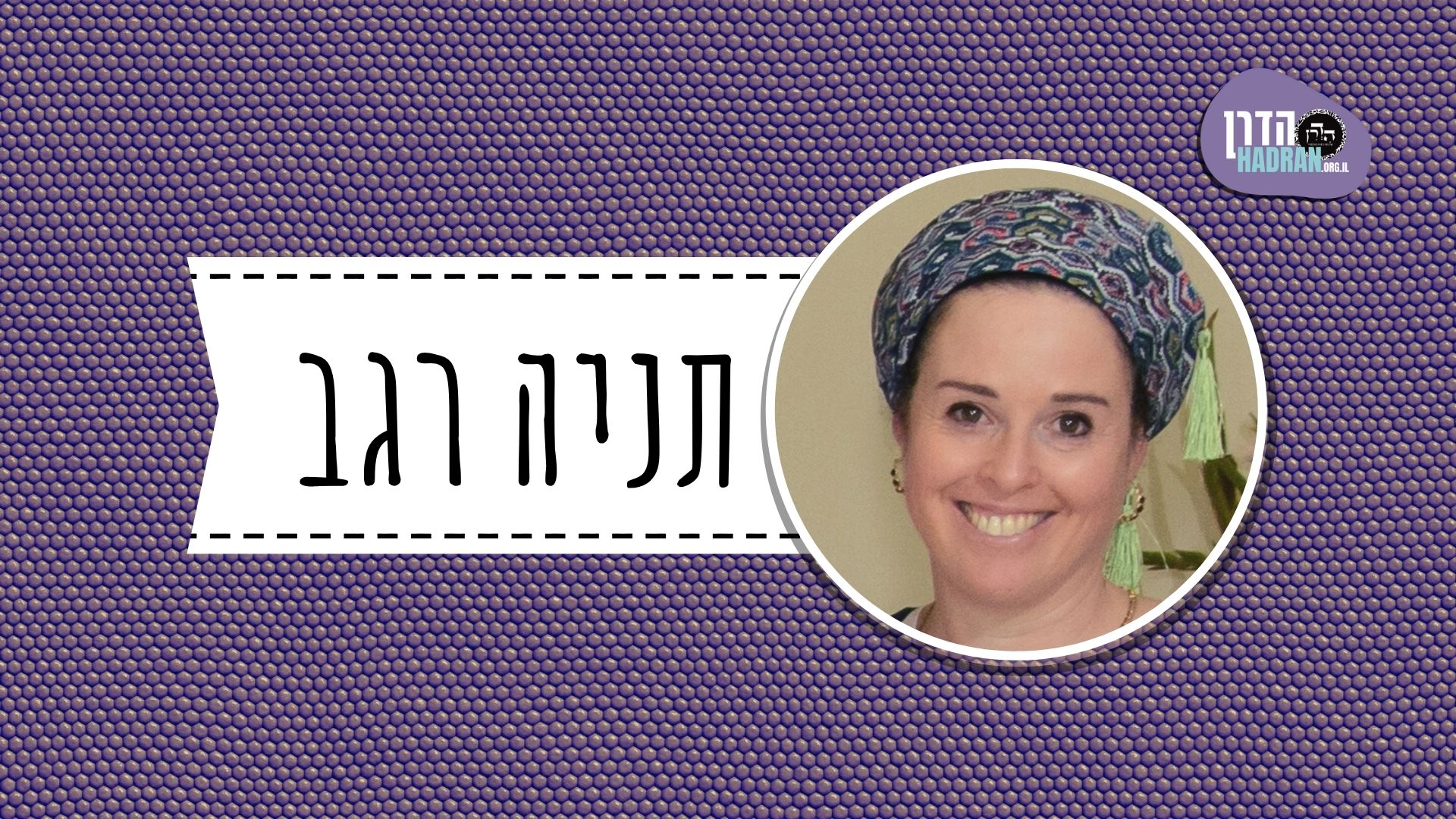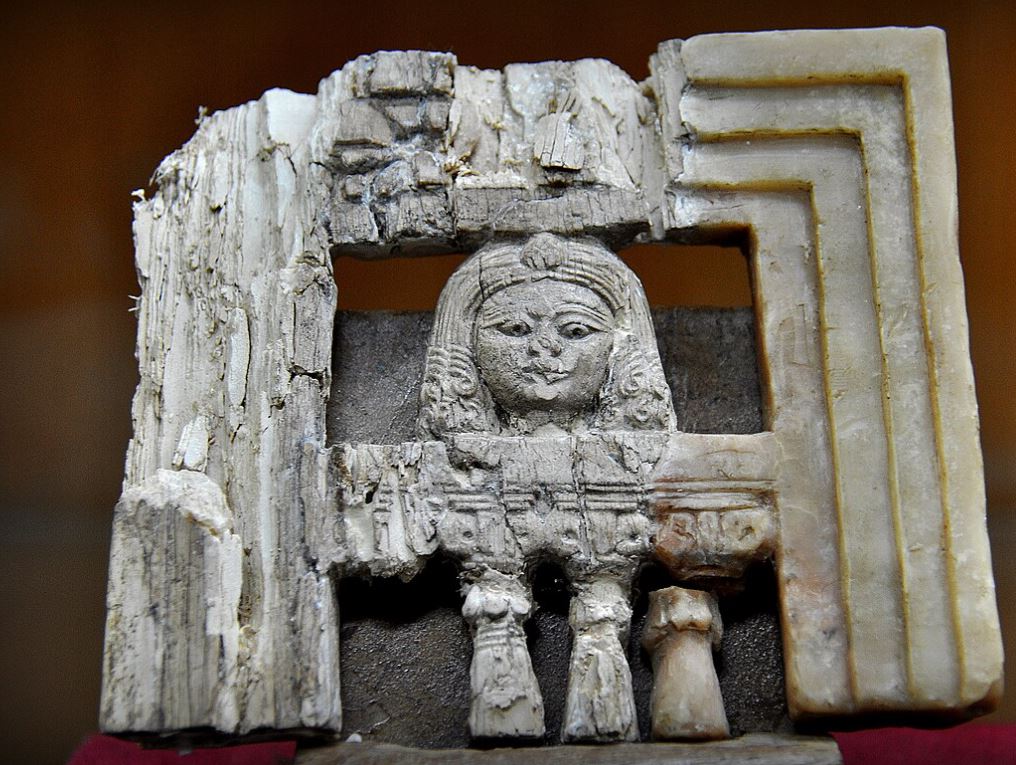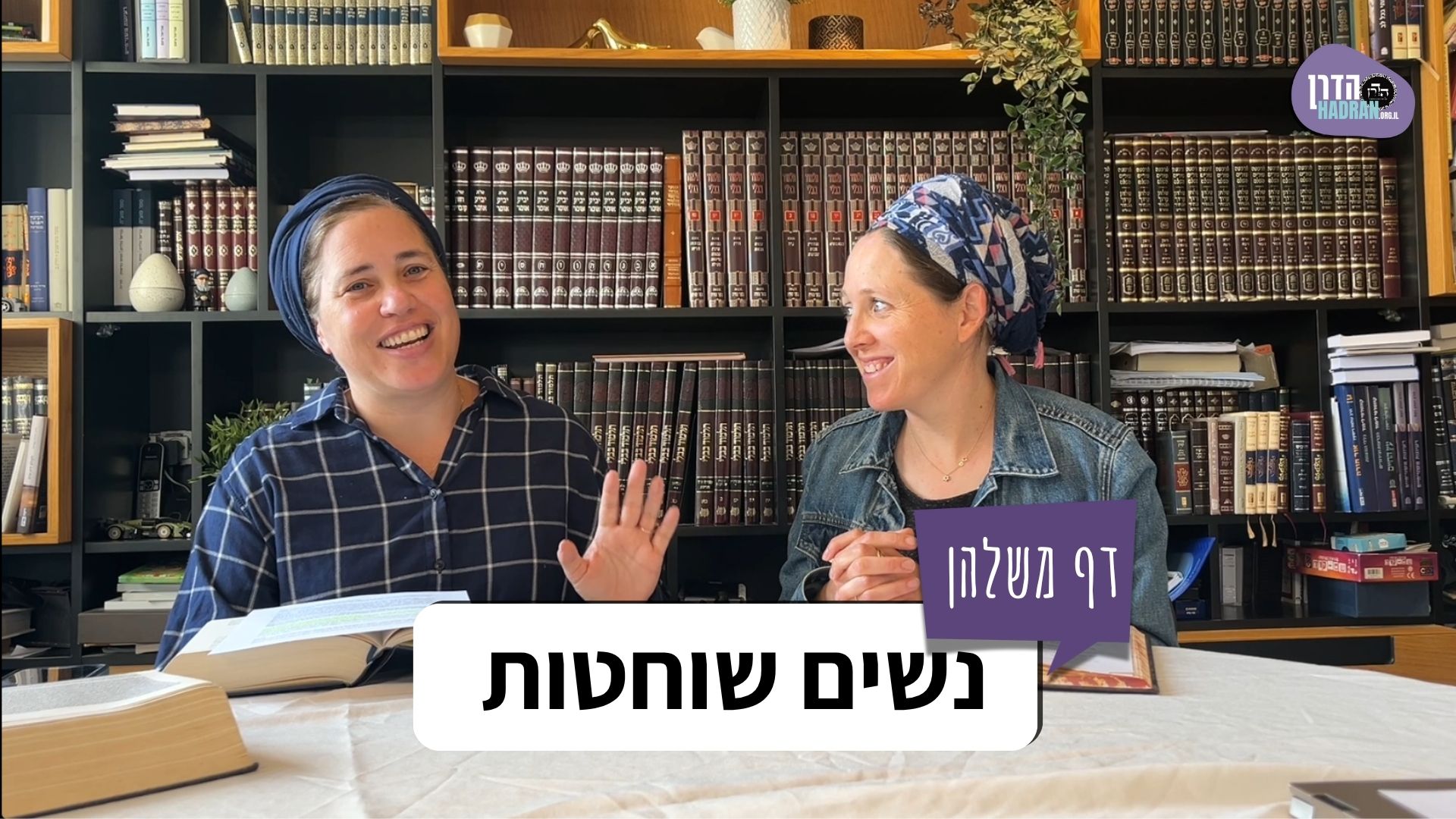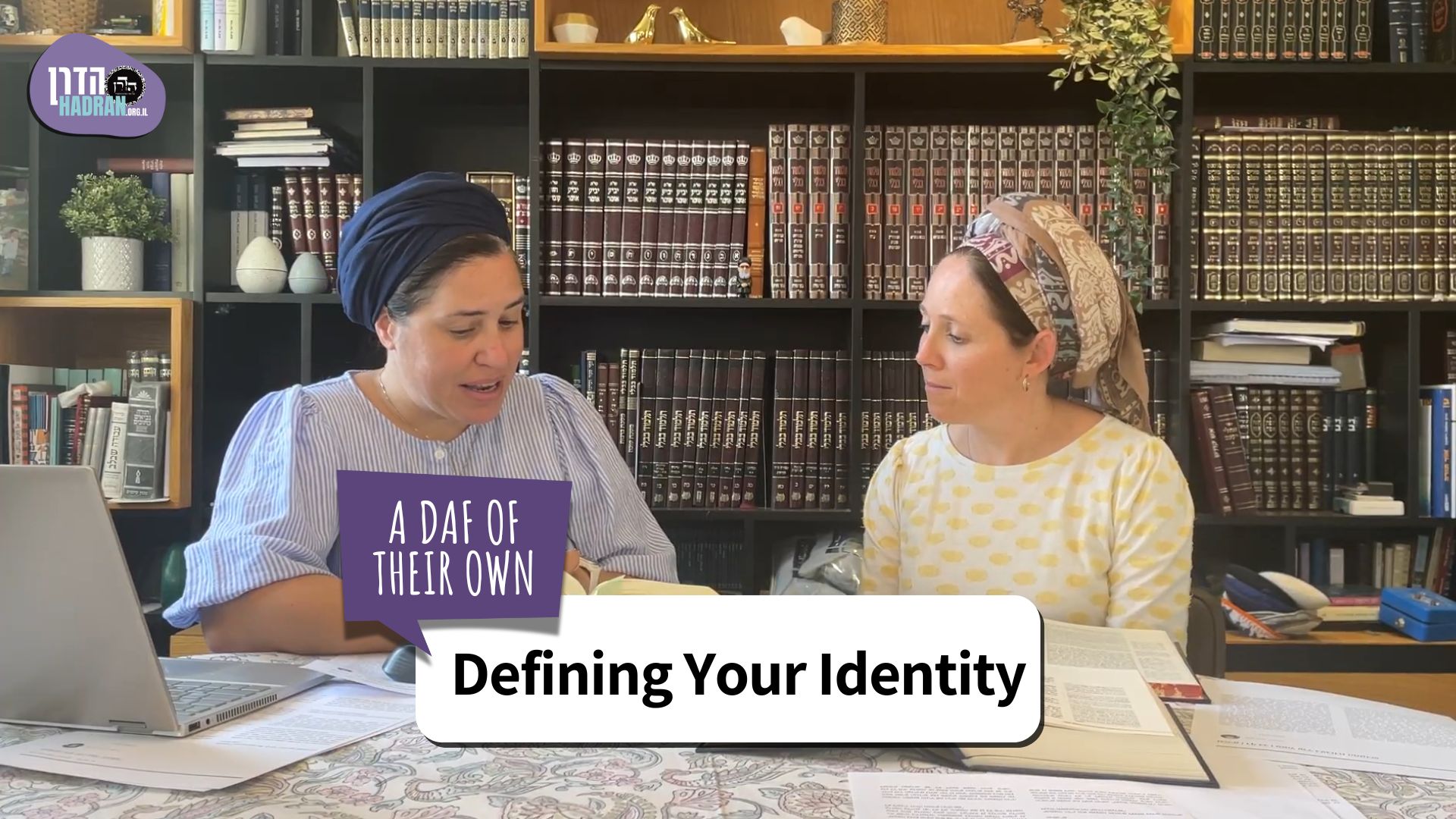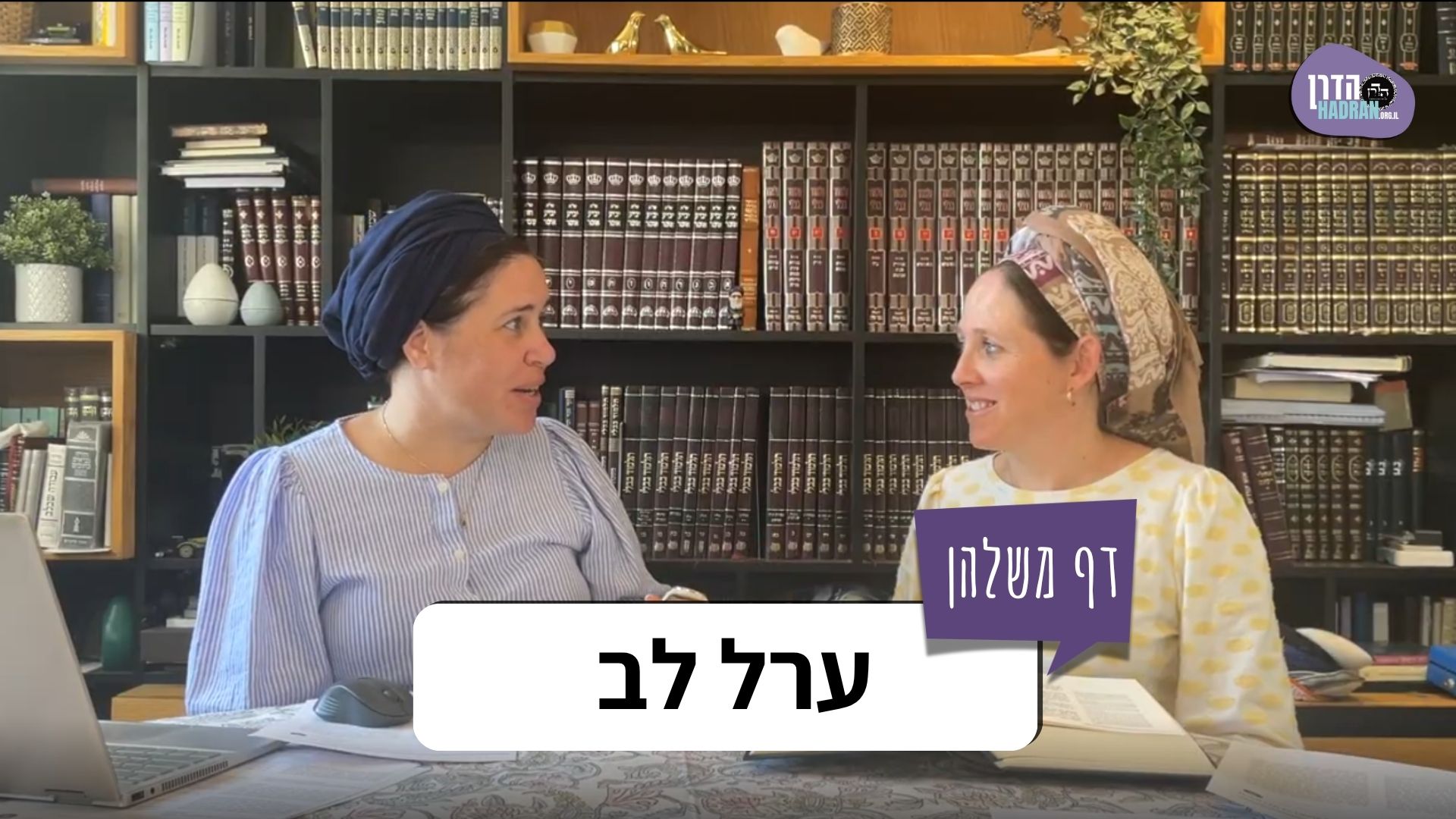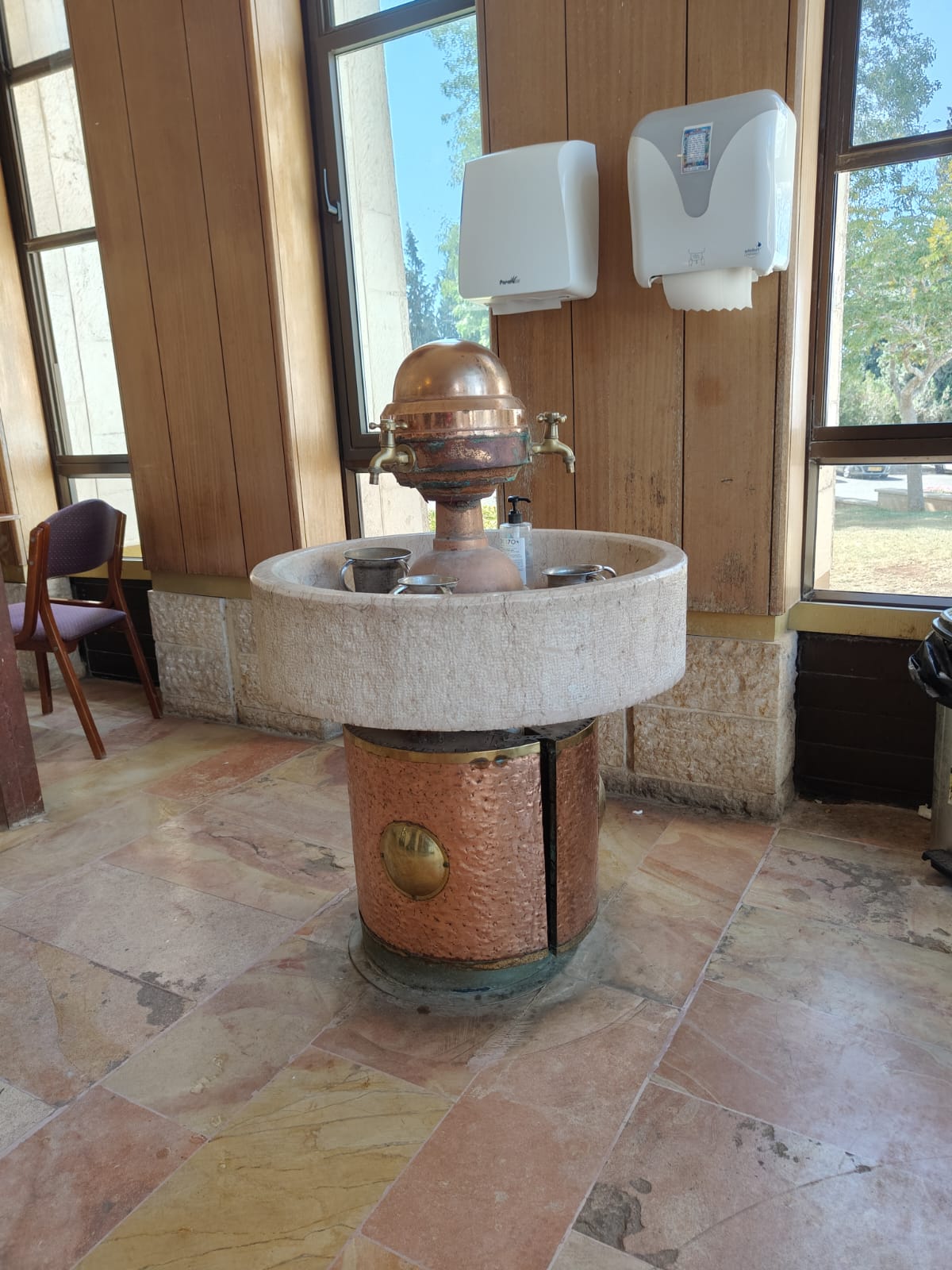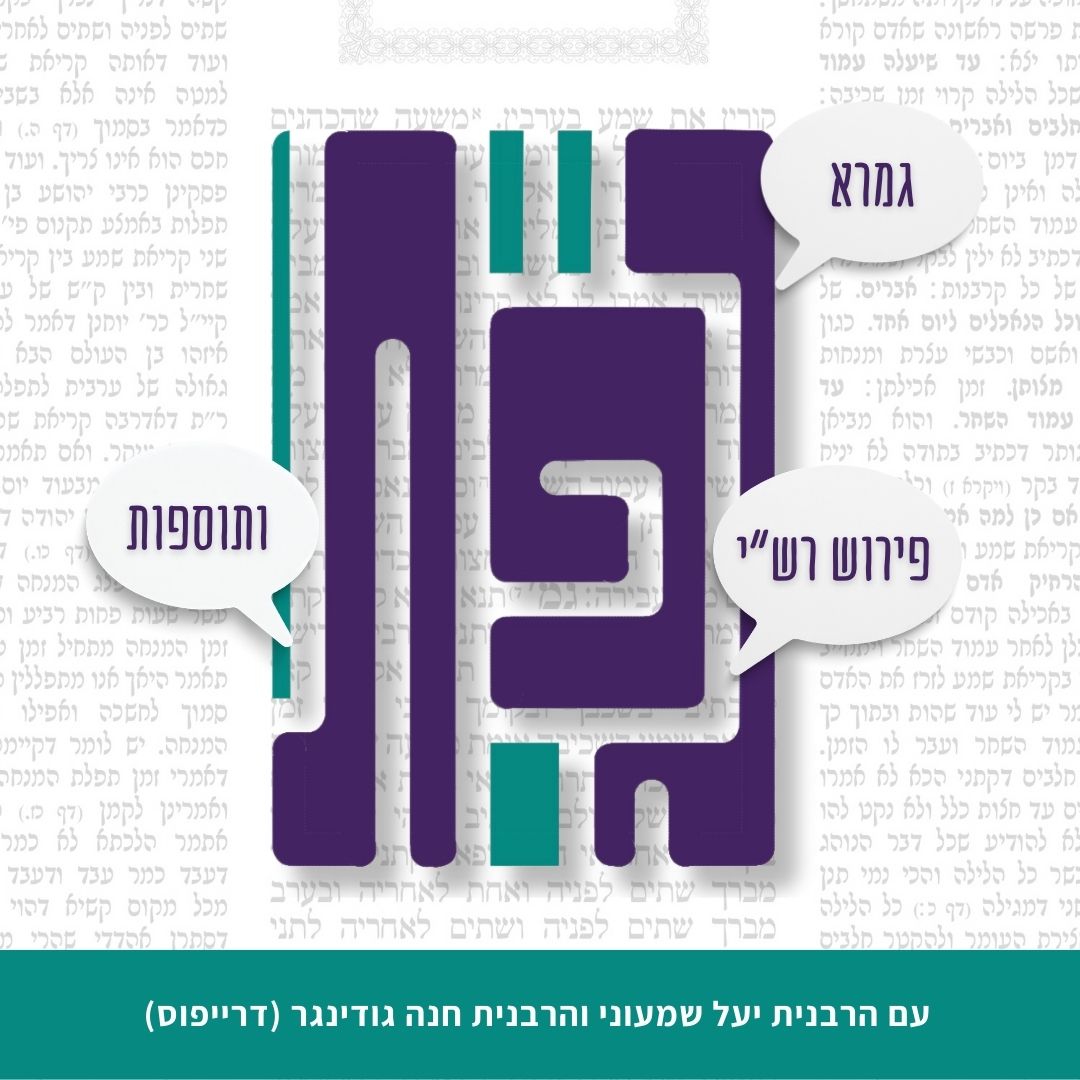Can one buy eggs from a non Jew? Under what conditions? Are there simanim of kosher eggs? If so, what are they? What is the halacha regarding one who finds blood in eggs? Does it depend on where the blood is? What is the source that eggs of non kosher birds are forbidden?
This month’s learning is sponsored by Beth Balkany in honor of their granddaughter, Devorah Chana Serach Eichel. “May she grow up to be a lifelong learner.”
Want to dedicate learning? Get started here:


This month’s learning is sponsored by Beth Balkany in honor of their granddaughter, Devorah Chana Serach Eichel. “May she grow up to be a lifelong learner.”
Delve Deeper
Broaden your understanding of the topics on this daf with classes and podcasts from top women Talmud scholars.
New to Talmud?
Check out our resources designed to help you navigate a page of Talmud – and study at the pace, level and style that fits you.
The Hadran Women’s Tapestry
Meet the diverse women learning Gemara at Hadran and hear their stories.
Chullin 64
עוברי דגים
fish embryos, i.e., fish eggs found in the fish’s innards.
ותניא גבי ביצים אלו הן סימני ביצים כל שכודרת ועגולגולת ראשה אחד כד וראשה אחד חד טהורה ב’ ראשיה כדין או ב’ ראשיה חדין טמאין חלבון מבחוץ וחלמון מבפנים טהורה חלמון מבחוץ וחלבון מבפנים טמאה חלמון וחלבון מעורבין זה בזה בידוע שהיא ביצת השרץ
The Gemara continues: And it is taught in a baraita about eggs that these are the signs of bird eggs: Any egg that narrows at the top and is rounded, so that one of its ends is rounded and the other one of its ends is pointed, is kosher. If both of its ends are rounded or both of its ends are pointed, they are non-kosher. If the albumen is on the outside and the yolk on the inside, it is kosher. If the yolk is on the outside and the albumen on the inside, it is non-kosher. If the yolk and albumen are mixed with each other, it is certainly the egg of a creeping animal. Therefore, if it is possible to recognize a kosher egg by these signs, there is no need to rely on the gentile.
לא צריכא דחתוכות וליבדוק בחלמון וחלבון בטרופות בקערה
The Gemara responds: No, it is necessary if the eggs have already been cut and one cannot know their original shape. The Gemara challenges: But let him inspect the yolk and the albumen, to see which is inside and which is outside. The Gemara responds: The baraita deals with a case where the eggs are mixed in a bowl, and it is impossible to discern this.
וכה”ג מי זבנינן מינייהו והא תניא אין מוכרין ביצת טרפה לעובד כוכבים אלא א”כ טרופה בקערה לפיכך אין לוקחין מהם ביצים טרופות בקערה
The Gemara counters: But in a case like this, where the eggs are mixed, may we buy eggs from them? Isn’t it taught in another baraita: One may sell the egg of a tereifa bird to a gentile only if it is mixed in a bowl; therefore, one may not buy eggs mixed in a bowl from them, because they may be from tereifot? If so, it cannot be that the baraita deals with a case where they are mixed, and one should be able to inspect the yolk and albumen.
אלא אמר ר’ זירא סימנין לאו דאורייתא דאי לא תימא הכי הא דאמר רב אסי שמנה ספיקות הן ליבדוק בביצים דידהו אלא ש”מ סימנין לאו דאורייתא
Rather, Rabbi Zeira said: The signs of a kosher egg are not valid by Torah law. As, if you do not say so, one encounters difficulty with that which Rav Asi says: There are eight birds whose kosher status is uncertain. Why is there uncertainty? Let one inspect their eggs for the signs listed in the baraita to determine whether they are kosher. Rather, learn from it that the signs are not valid by Torah law and one may not rely on them.
אלא למאי הלכתא קתני לה הכי קאמר ב’ ראשיה כדין או ב’ ראשיה חדין או חלמון מבחוץ וחלבון מבפנים ודאי טמאה רישיה חד חד רישיה חד כד וחלבון מבחוץ וחלמון מבפנים ואמר לך של עוף פלוני וטהור הוא סמוך עליהם בסתמא לא תסמוך עליהם דאיכא דעורבא דדמי לדיונה
The Gemara asks: But if one may not rely on these signs, with regard to what halakha is the baraita teaching them? The Gemara responds: This is what the baraita is saying: If both of its ends are rounded, or both its ends are pointed, or the yolk is on the outside and the albumen is on the inside, it is certainly non-kosher. But if one of its ends is pointed and one of its ends is rounded, and the albumen is on the outside and the yolk on the inside, and the gentile says to you that it is from such and such bird, and that bird is kosher, rely on the signs. But if he offers no specification of the type of bird, or if one simply finds eggs with these signs, do not rely on them, since there are crow’s eggs that resemble those of a pigeon.
אמר מר חלבון וחלמון מעורבין זה בזה בידוע שהיא ביצת השרץ למאי הלכתא אמר רב עוקבא בר חמא לומר שאם ריקמה וניקבה (בכעדשה מטמא)
The Gemara analyzes the baraita: The Master said: If the albumen and yolk are mixed with each other, it is certainly the egg of a creeping animal and not of a non-kosher bird. The Gemara asks: For what halakha is this information necessary? Either way, the egg is forbidden. Rav Ukva bar Ḥama said: The baraita means to say that if tissue of an embryo developed [rikema] inside it and it was perforated, and one touched it, it transmits ritual impurity provided that the embryo is at least the size of a lentil-bulk, because the carcass of a creeping animal of this size is a source of ritual impurity.
מתקיף לה רבינא ודלמא דנחש היא אלא אמר רבא שאם ריקמה ואכלה לוקה עליה משום שרץ השורץ על הארץ
Ravina objects to this: But perhaps it is the egg of a snake, whose carcass does not transmit ritual impurity, even though the albumen and yolk of its eggs are mixed together. Rather, Rava said: The baraita does not teach about ritual impurity, but rather that if tissue of an embryo developed inside the egg and one ate it, he is flogged on its account, due to the prohibition: “And every swarming thing that swarms upon the earth is a detestable thing; it shall not be eaten” (Leviticus 11:41).
אי הכי מאי איריא דטמאה אפילו דטהורה נמי דתניא (ויקרא יא, מא) כל השרץ השורץ על הארץ
The Gemara asks: If so, why specifically mention the egg of a non-kosher creeping animal? The same would apply even for one who eats the embryo of a kosher bird as well. In either case, one is flogged, as it is taught in a baraita that the verse: “Every swarming thing that swarms upon the earth,”
לרבות אפרוחים שלא נפתחו עיניהם מדרבנן וקרא אסמכתא בעלמא
serves to include chicks of pigeons whose eyes have not yet opened in the prohibition against consuming swarming things. The Gemara responds: This prohibition is by rabbinic law, and the verse cited is a mere support for it. One who eats the embryo of a kosher bird is not liable to receive lashes.
תנו רבנן גיעולי ביצים מותרות ביצים מוזרות נפש יפה תאכלם נמצא עליה קורט דם זורק את הדם ואוכל את השאר
§ The Sages taught in a baraita: Kosher eggs that have been boiled with non-kosher eggs are permitted. Unfertilized eggs are permitted, and one of strong constitution may eat them, even if the hen has sat on them for a long period of time. If a drop [koret] of blood is found on it, one discards the blood, which is the first stage of an embryo’s development, and eats the rest.
אמר רבי ירמיה והוא שנמצא על קשר שלה תני דוסתאי אבוה דר’ אפטוריקי לא שנו אלא שנמצא על חלבון שלה אבל נמצא על חלמון שלה אפי’ ביצה אסורה מאי טעמא דשדא תכלא בכולה א”ל רב גביהה מבי כתיל לרב אשי איפכא תני תנא קמיה דאביי ואביי הוא דתרצה ניהליה הכי
Rabbi Yirmeya said: And this applies when the blood is found on its knot, i.e., the place in the albumen where the embryo begins to develop, since this proves that tissue has not developed elsewhere in the egg. And so taught Dostai, father of Rabbi Aptoriki: The Sages taught that one may eat the rest of the egg only when the blood is found on its albumen, i.e., the knot; but if it is found on its yolk, even the rest of the egg is forbidden. What is the reason for this? It is that the decay has spread through all of it. Rav Geviha from Bei Ketil said to Rav Ashi: A tanna taught the opposite before Abaye, that one may eat the rest of the egg only when the blood is found on its yolk, and it is Abaye that corrected it in this manner.
אמר חזקיה מנין לביצת טמאה שהיא אסורה מן התורה שנאמר (ויקרא יא, טז) ואת בת היענה וכי בת יש לה ליענה אלא איזו זו ביצה טמאה ודלמא היינו שמייהו לא סלקא דעתך דכתיב (איכה ד, ג) בת עמי לאכזר כיענים במדבר
§ Ḥizkiyya says: From where is it derived that the egg of a non-kosher bird is prohibited by Torah law? As it is stated: “And the daughter [bat] of the ya’ana” (Leviticus 11:16). But does the ya’ana have a daughter whose forbidden status would be different from that of its mother? Both daughter and mother should be included in the same prohibition. Rather, which is this? This is a non-kosher egg. The Gemara challenges: But perhaps this is their name, i.e., the bird is called bat ya’ana. The Gemara responds: This should not enter your mind, as it is written: “The daughter of my people has become cruel, like the ye’enim in the wilderness” (Lamentations 4:3).
ולא והא כתיב (מיכה א, ח) אעשה מספד כתנים ואבל כבנות יענה כיענה זו שמתאבלת על בניה והא כתיב (ישעיהו יג, כא) ושכנו שם בנות יענה כיענה זו ששוכנת עם בניה
The Gemara persists: And is bat ya’ana not its name? But isn’t it written: “I will make a wailing like the jackals, and a mourning like the daughters [benot] of the ya’ana” (Micah 1:8)? The Gemara responds: The verse means: I will make mourning like this ya’ana that mourns for its children. The Gemara asks: But isn’t it written: “And benot ya’ana shall dwell there” (Isaiah 13:21)? The Gemara responds: Here too, the verse means: And they shall dwell there like this ya’ana that dwells with its children.
והכתיב (ישעיהו מג, כ) תכבדני חית השדה תנים ובנות יענה ואי סלקא דעתך ביצה ביצה בת מימר שירה היא אלא כתיב היענה וכתיב בת היענה
The Gemara asks: But isn’t it written: “The animals of the field shall honor Me, the jackals and the benot ya’ana” (Isaiah 43:20)? And if it enters your mind that the term bat ya’ana is referring to an egg, can an egg sing a song of praise to God? Rather, one must say: The ya’ana is written, and the bat ya’ana is also written, and both are acceptable names for this bird.
ושאני הכא דפסק ספרא לשתי תיבות ומדפסיק להו ספרא
And still, the name here is different from those of other animals, in that the scribe splits it into two words: Bat ya’ana, even though it is one species. And from the fact that the scribe splits it


